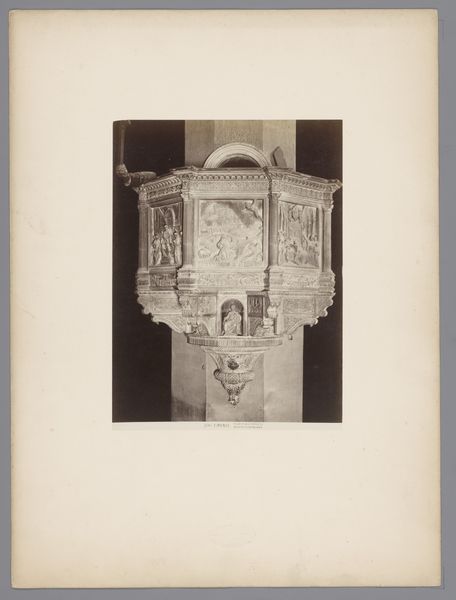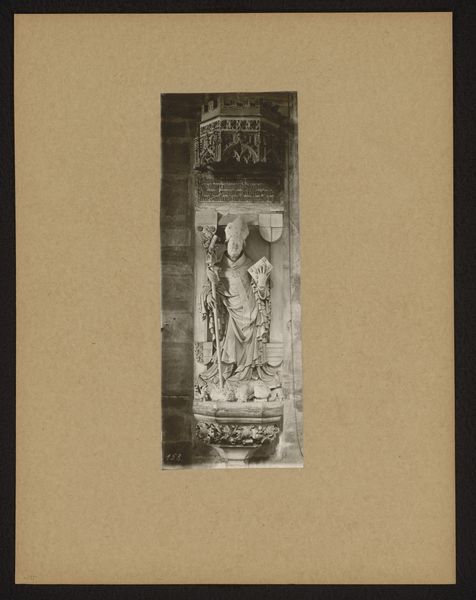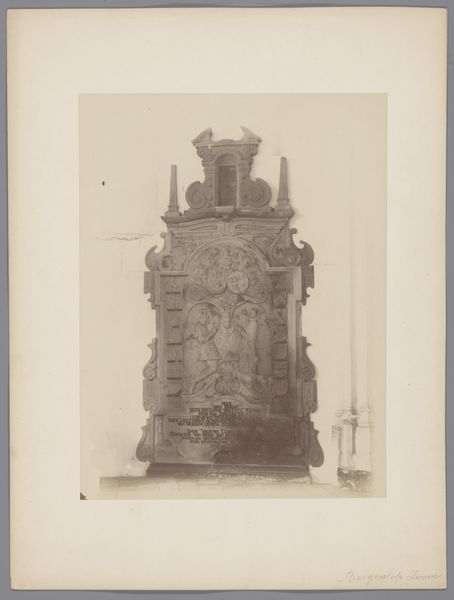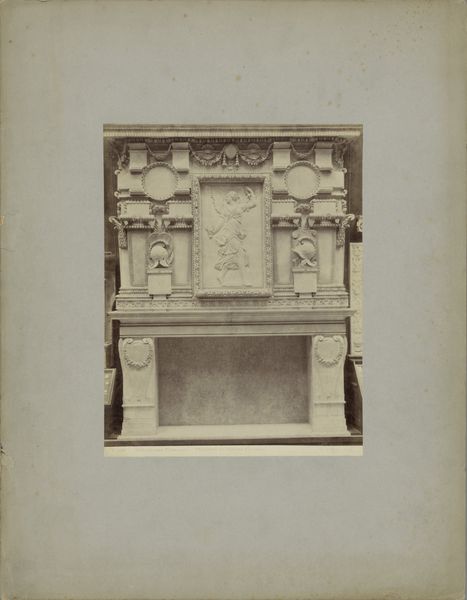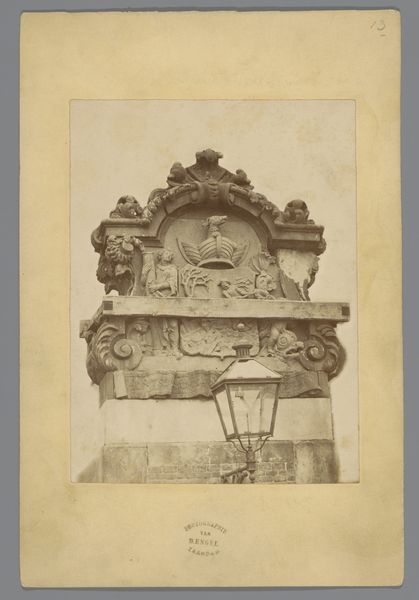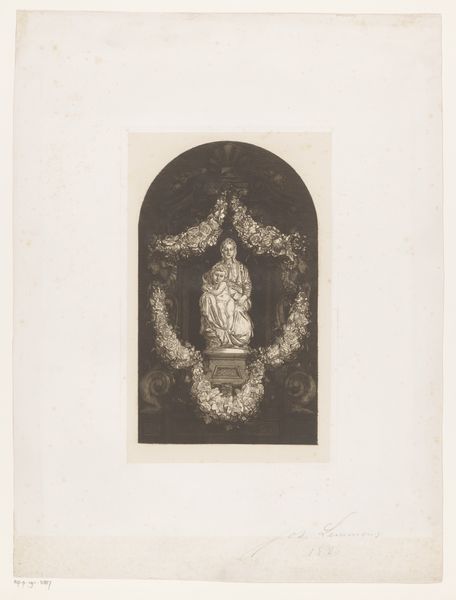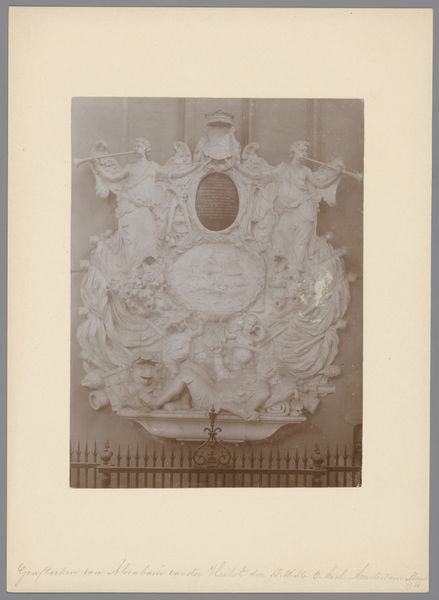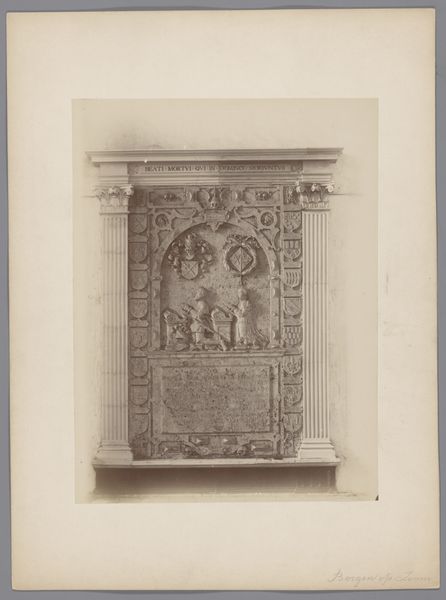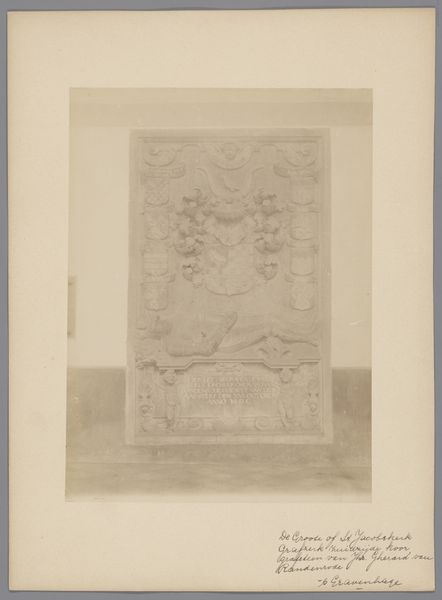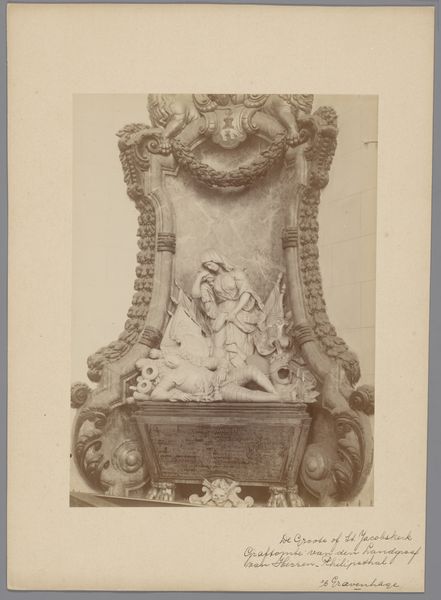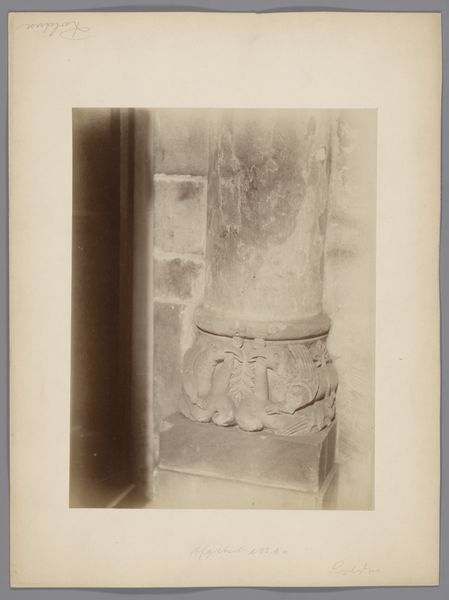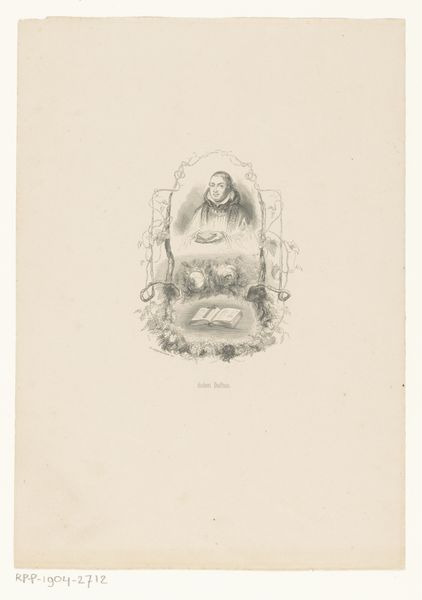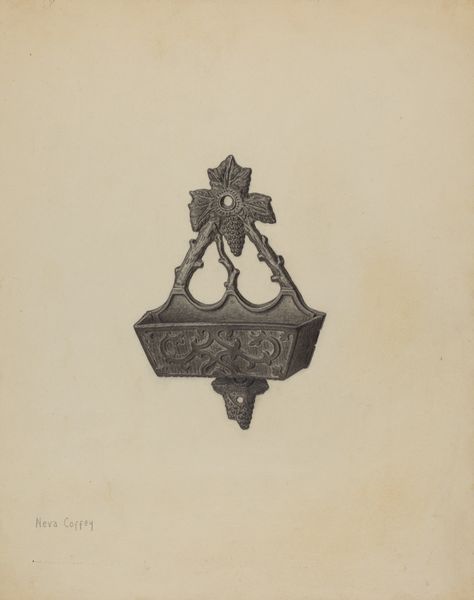
Grafmonument van Jacob van Campen in de Sint-Joriskerk te Amersfoort 1891
0:00
0:00
anoniemmonumentenzorg
Rijksmuseum
Dimensions: height 222 mm, width 164 mm
Copyright: Rijks Museum: Open Domain
Curator: It has a quiet, solemn presence, doesn’t it? Sort of frozen in time...almost ethereal. Editor: We’re looking at a photographic print dating back to 1891, currently residing in the Rijksmuseum. It depicts the grave monument of Jacob van Campen within the Sint-Joriskerk in Amersfoort. The photograph itself is by an anonymous artist, designated only as being from "Monumentenzorg." Curator: Monumentenzorg, right... it is definitely concerned with posterity, as it almost literally photographs "caring for the monuments." Editor: Indeed. Look at how the light plays across the sculpture—the drapery, the faces. This must have been intended to capture and preserve that play. Curator: Precisely. The iconography speaks to the visual language around death at the time. Look at the figures – I'm seeing children maybe? Flanking what seems to be a shield. Editor: Yes, putti—cherubic figures are classic symbols, not of death, but perhaps of eternal life, of the soul’s transcendence. Note their placement either side of the shield, echoing familial heraldry or perhaps representing more universal virtues the family wishes to align themselves with. Curator: A fascinating interplay of earthly representation—in the form of heraldry—and heavenly aspiration, so to speak. Editor: The garlands framing the central panel, the way they contrast the plainness of the stone... it all serves to create a visual rhythm between decay and immortality, memory and continued legacy. There's real hope there. Curator: Right, they give us this constant oscillation... they frame death. And you know, the visual memory created by photographs themselves can be very powerful as mnemonic triggers. That image would become an active agent of mourning for some. Editor: An echo of what was, captured for what always will be in memory. It truly makes you wonder about the hands, the eyes, of both the anonymous photographer from Monumentenzorg, and those who initially crafted the sculptural details. Curator: Absolutely. This photograph acts like an anchor through time, not just to remember the monument, but Jacob van Campen himself. What stories do these symbolic figures still have to tell us about the past? Editor: Or maybe the right question is: what feelings can those aged forms help us project towards the future? Food for thought.
Comments
No comments
Be the first to comment and join the conversation on the ultimate creative platform.
